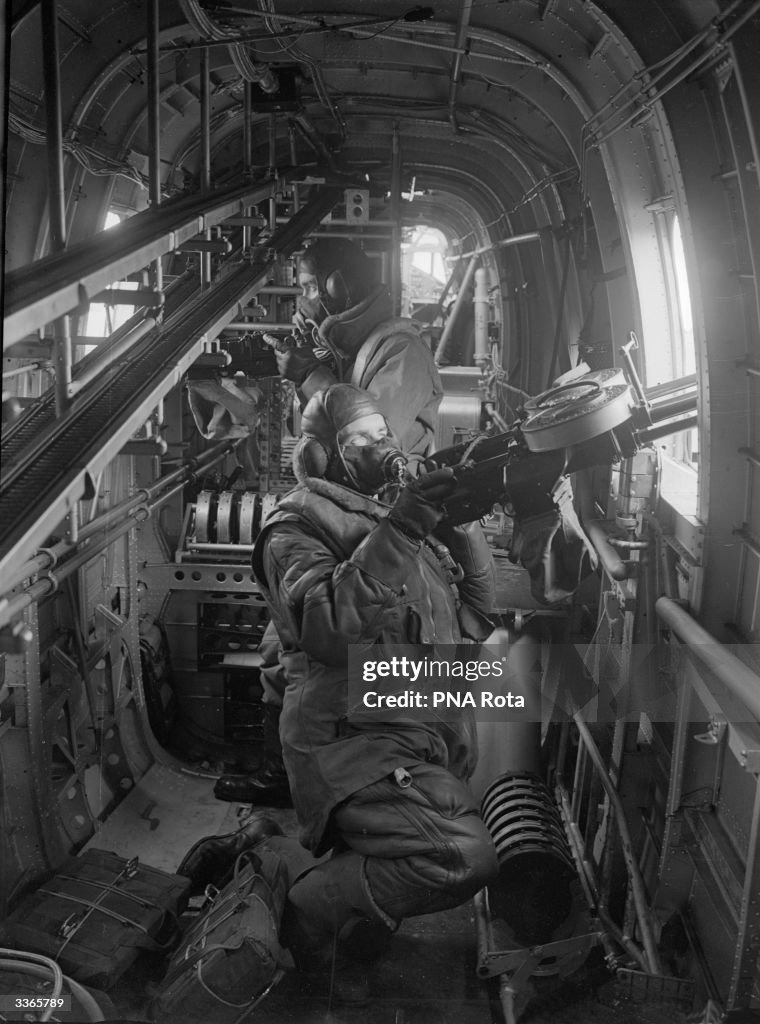History
Background
The development of the Liberator began when the US Army Air Corps issued a request in 1938 for Consolidated Aircraft to produce the B-17 Flying Fortress under license. After visiting Boeing’s Seattle factory and inspecting the B-17 firsthand, Consolidated instead proposed a superior design of its own to compete directly with Boeing’s bomber.
In January 1939, the Army Air Corps invited Consolidated to submit a formal design for a long-range heavy bomber that offered better range, speed, and service ceiling than the B-17. This led to the Model 32 proposal, featuring a highly efficient airfoil wing, a twin tail, and twin bomb bays, each equal in capacity to the B-17’s single bay. It was to be powered by four Pratt & Whitney R-1830-33 engines, equipped with mechanical two-speed superchargers but no turbosuperchargers.
Following review, the Army awarded a contract for one prototype, designated XB-24, on March 30, 1939. In less than nine months, the XB-24 made its maiden flight on December 29, 1939. Even before it flew, the Army had already placed orders for seven YB-24s and thirty-six B-24As for evaluation. The XB-24 was transferred to Wright Field, Ohio, for testing, where extensive evaluations led to a series of refinements before it was officially accepted by the Army on August 13, 1940.
French & British Orders
In May 1938, a delegation from the French Purchasing Commission visited Consolidated and issued a specification for an export version of the Model 32, designated LB-30MF (“Mission Française”), with “LB” standing for “Land Bomber.” In April 1940, France expressed a strong interest in the aircraft and placed an order for 175 examples. However, the fall of France in June 1940 rendered the order moot, and the contract was transferred to Great Britain.
Under this revised contract, the first six YB-24 airframes were completed to British specifications and delivered as LB-30As, which were assigned to Ferry Command for use as long-range transports. These were operated by British Overseas Airways Corporation crews on transatlantic routes. The American equivalent, the B-24A, was also used for similar transport purposes.
The next twenty aircraft, built from diverted B-24A production, became known as LB-30Bs or Liberator Mk.Is in RAF service. These were the first Liberators to see operational combat, entering service with No. 120 Squadron of Coastal Command by summer 1941. Modifications included ASV (air-to-surface vessel) radar antennas, racks for depth charges, and in some cases, a 20 mm cannon pack fitted under the forward fuselage for anti-submarine warfare.
The RAF’s Liberator Mk.II
The next version, the Liberator Mk.II, was the first purpose-built Liberator bomber variant for the RAF and had no direct American counterpart. It incorporated significant structural change, a lengthened nose (adding approximately three feet), which became standard for all later Liberator models. These aircraft also introduced power-operated defensive armament: two Boulton Paul turrets, each armed with four .303-caliber Browning machine guns, were fitted in the tail and upper fuselage.
Fuel tanks and fuel lines were now self-sealing for improved survivability, and the earlier Hamilton Standard propellers were replaced by longer-hub Curtiss Electric propellers. A total of 140 Liberator Mk.IIs were built specifically to RAF specifications, rather than being diverted from US orders. While some were delivered unarmed, they were fitted with British equipment and weaponry upon arrival at RAF bases.
The first Liberator Mk.II, AL503, was scheduled for delivery on June 2, 1941, but tragically crashed into San Diego Bay due to a jammed elevator caused by a loose bolt. The accident killed Consolidated’s chief test pilot, William Wheatley, and others aboard, delaying further deliveries for two months. The aircraft finally entered RAF service in August 1941.
Liberator Mk.IIs joined No. 120 Squadron, supplementing the earlier Mk.Is for Atlantic patrol and anti-submarine operations. In January 1942, Mk.IIs began equipping the No. 1653 Conversion Unit of RAF Bomber Command and were later transferred to the China-Burma-India (CBI) theater. Some Mk.IIs were converted as long-range transports for ferry and logistics duties.
Following the attack on Pearl Harbor, the US Army requisitioned 75 of the 140 airframes originally destined for the RAF. These became the first Liberators to see US service and combat action in the Pacific theater. Of these, 23 were later returned to the RAF once more advanced US Liberator variants became available.
The arrival of the improved Liberator Mk.III, based on the American B-24D with turbosupercharged engines and British modifications, gradually replaced both the Mk.I and Mk.II in front-line service from 1942 onward.







